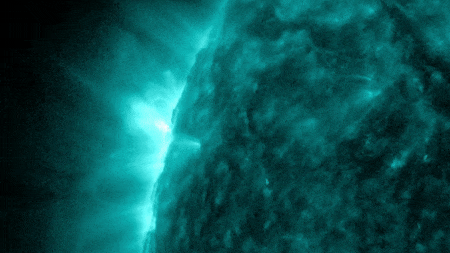The sun has released an almost non-stop barrage of solar flares in the past 24 hours, including nine powerful M-class flares.
At the time of writing, at least seven of the powerful M-flares have all been attributed to the same giant sunspot region known as AR3311 as it slowly turns to face Earth.
AR3311 is joined by another huge sunspot — AR3310 — which was responsible for the colossal solar flare on May 16 that caused widespread radio blackouts. The volatile pair are slowly rotating into view and will be directly facing us by the weekend.
Related: How to observe the sun safely (and what to look for)
Solar flares are caused when magnetic energy builds up in the sun’s atmosphere and is released in an intense burst of electromagnetic radiation. They are categorized by size into lettered groups, with X-class being the most powerful. Then there are M-class flares that are 10 times smaller than X-class flares, then C-class, B-class and finally A-class flares which are too weak to significantly affect Earth.
Within each class, numbers from 1 to 10 (and beyond, for X-class flares) denote a flare’s relative strength. The strongest flare in the last 24 hours clocked in at M5.3 at 8:40 p.m. ET on May 18 (00:40 GMT on May 19).
A series of shortwave radio blackouts have been triggered by the fusillade of flares, sending a strong pulse of X-rays and extreme ultraviolet radiation barrelling toward Earth. Traveling at the speed of light, the radiation reaches Earth in just over eight minutes and ionizes the upper layer of Earth’s atmosphere — the thermosphere — triggering shortwave radio blackouts on the sun-lit portion of Earth at the time of impact.
Solar activity is on the rise as part of solar cycle 25, which scientists predict will peak in 2025. To find out if there is a solar flare today and to keep up with the latest space weather findings, visit the National Oceanic and Atmospheric Administration’s Space Weather Prediction Center to see the most recent solar X-ray data from the agency’s GOES weather satellites that perch over the eastern and western U.S.

